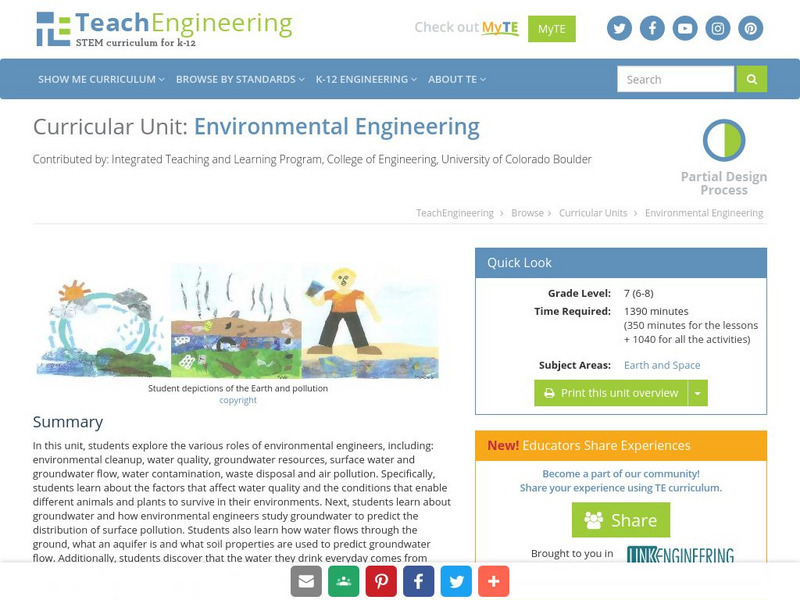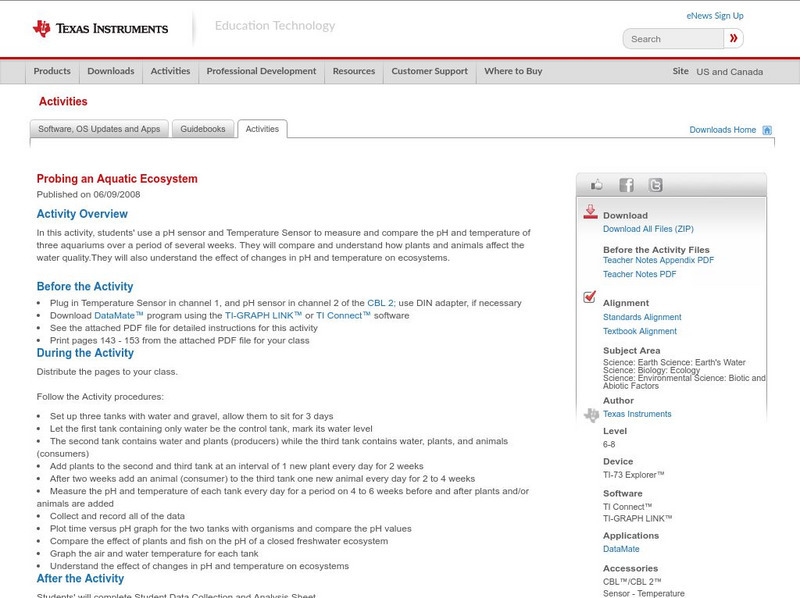TeachEngineering
Teach Engineering: Would You Drink That?
This activity focuses on getting students to think about bacteria, water quality and water treatment processes. Students develop and test their hypotheses about the "cleanliness" of three water samples prepared by the teacher. Then they...
TeachEngineering
Teach Engineering: Grow Your Own Algae!
Students discover how tiny microscopic plants can remove nutrients from polluted water. They also learn how to engineer a system to remove pollutants faster and faster by changing the environment for the algae.
Texas Instruments
Texas Instruments: Jason: Does Clear Water Mean Healthy Water?
JASON Aquatic Field Study: Explore how most aquatic animals and plants need clear water to survive by performing an experiment to measure the water clarity of a local aquatic site.
TeachEngineering
Teach Engineering: Environmental Engineering
In this unit, students explore the various roles of environmental engineers, including: environmental cleanup, water quality, groundwater resources, surface water and groundwater flow, water contamination, waste disposal and air...
NOAA
Noaa: Estuaries: Noaa: Science Data: Graphing
Create graphs of marine ecosystems using real-time data.
PBS
Pbs Kids: Eekoworld
Interactive website from PBS Kids teaches students age 6-9 about a number of ecological topics and the role they play in protecting the environment. Topics include recycling, the environment, air and water, plants and animals, and the...
Texas Instruments
Texas Instruments: Probing an Aquatic Ecosystem
In this activity, students' use a pH sensor and Temperature Sensor to measure and compare the pH and temperature of three aquariums over a period of several weeks. They will compare and understand how plants and animals affect the water...






